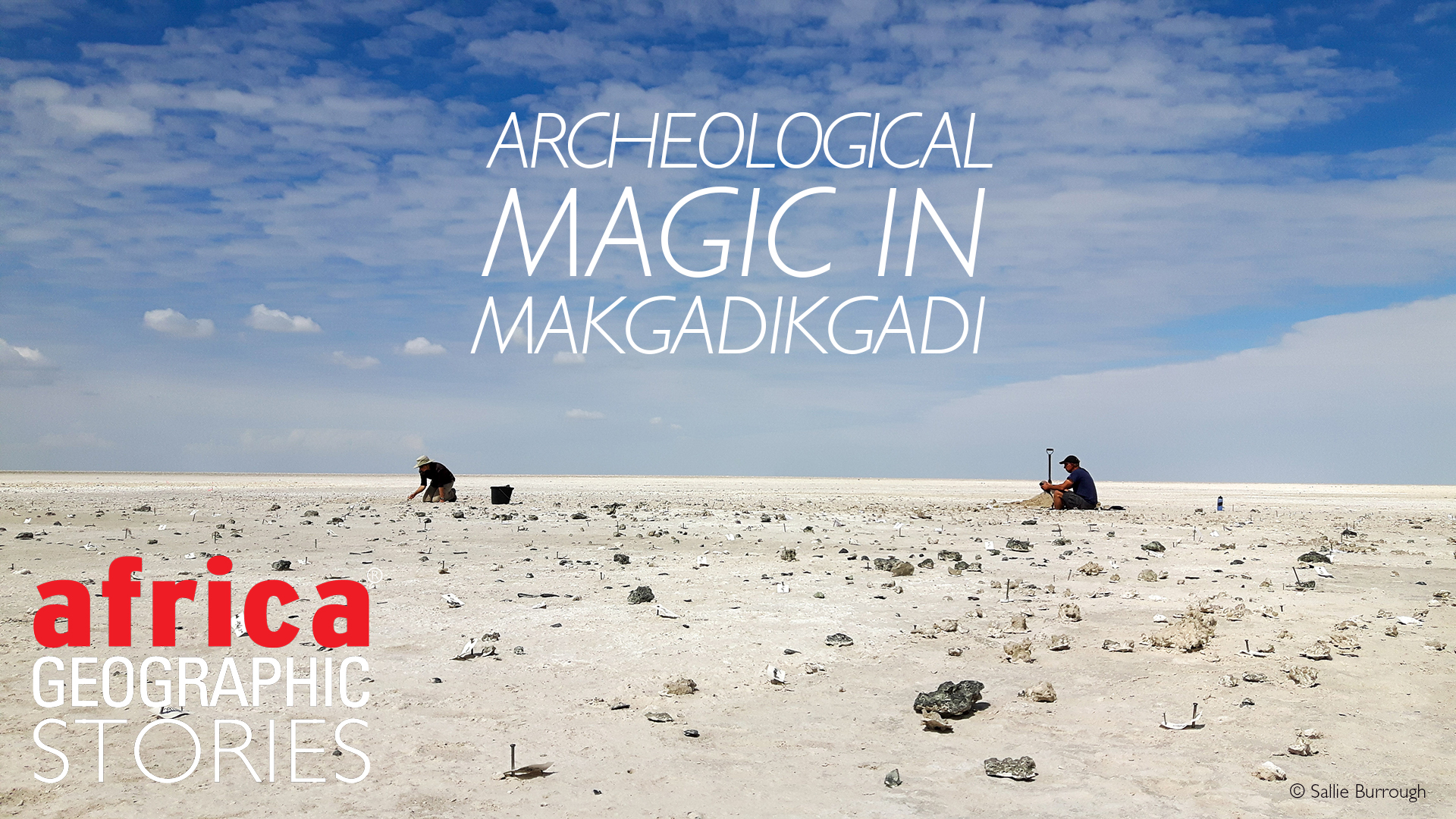
Digging beneath the mud of the salt pans reveals a world of archeological wonder


The salt pans of Botswana’ Makgadikgadi hold an unusual magic that I’ve heard described as “humbling”, “healing”, or even “disturbing”. What is it about this dusty old lakebed, jammed full of salt and grass and scrub mopane, that makes visitors feel this way? That seems to challenge our sense of self, irreversibly? That draws people back time and time again? In the Makgadikgadi, the skies are huge, and the sense of space is overwhelming. But there is more than the landscape. As part of a team of scientists who have spent time studying the magic of the Makgadikgadi, we have long known that, just below the saltpan surface of the pans lies an ancient story written in stone artefacts, thousands of years ago. Archeologists are now just beginning to find the ability to read it.
Bounded by ancient shorelines, Botswana’s salt pans were once one part of one of Africa’s largest lakes. Running nearly 200km from east to west, this lake covered an area of 66,000km² –about the size of Sri Lanka. The lake has come and gone over the last hundred thousand years as tectonism has reorganised river systems. Natural climate cycles during the last 200,000 years have also periodically brought vastly different rainfall conditions to the region. Today, the site is made up of mostly mud and puddles, with the wettest parts in Sowa Pan in the east supporting an extraordinary diversity of birdlife in the rainy season – including a migration of up to 88,000 pairs of flamingos.
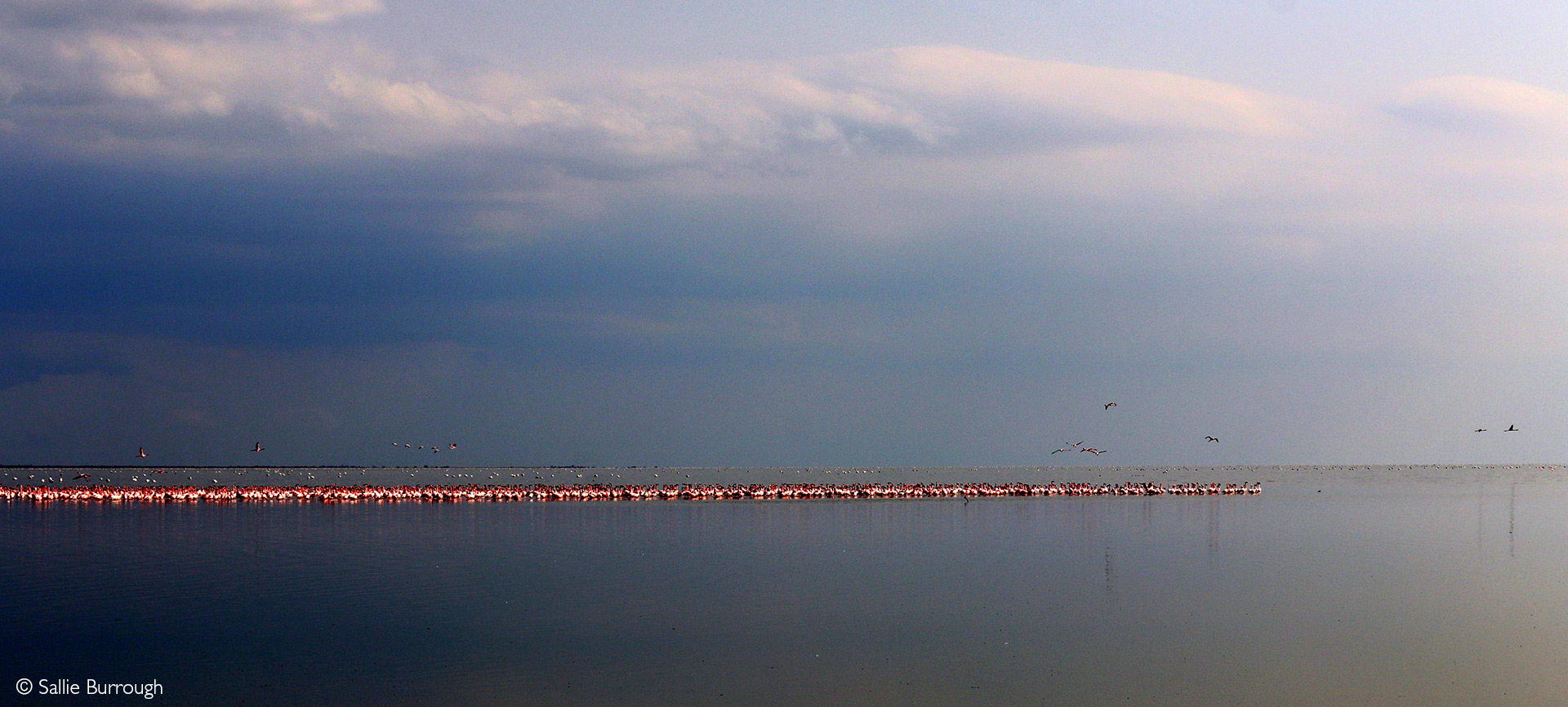

In the dry winter months, most of the surface dries out and firms up – a little like a giant bowl of porridge left out in the sun. Self-drivers know the risks here well: break through the hard-baked porridge top, and it might cost you days of digging, if not your entire vehicle. Many come here for that challenge. Others are drawn by the vast expanse of salt and sky, the baobabs that mark its boundaries, and the 20,000-body strong migration of zebra and wildebeest that covet the Makgadikgadi’s mineral-rich grasslands.
 Find out about Makgadikgadi Pans for your next African safari. We have ready-made safaris to choose from, or ask us to build one just for you.
Find out about Makgadikgadi Pans for your next African safari. We have ready-made safaris to choose from, or ask us to build one just for you.
More recently, however, tourists are coming for another reason. In 2019, a controversial academic paper used mitochondrial genetic evidence to argue that the Makgadikgadi was once the ‘homeland’ of humanity, from which groups of anatomically modern humans migrated between 130,000– 110,000 years ago. That argument has not been persuasive for most scientists working on human origins, but it has thrown a spotlight on a little-known quirk of this ancient lakebed – that it is filled with the stone tools of ancient humans.
For a long time, the difficulties of operating in an ephemerally stable bowl of porridge kept all but the most eager of archaeologists at bay. But, over the last seven years, our small team of international scientists in collaboration with the University of Botswana have painstakingly pieced together thousands of fragments of worked silcrete to try to understand how long humanity has been hanging out in this lakebed and what on earth they might have been doing here.
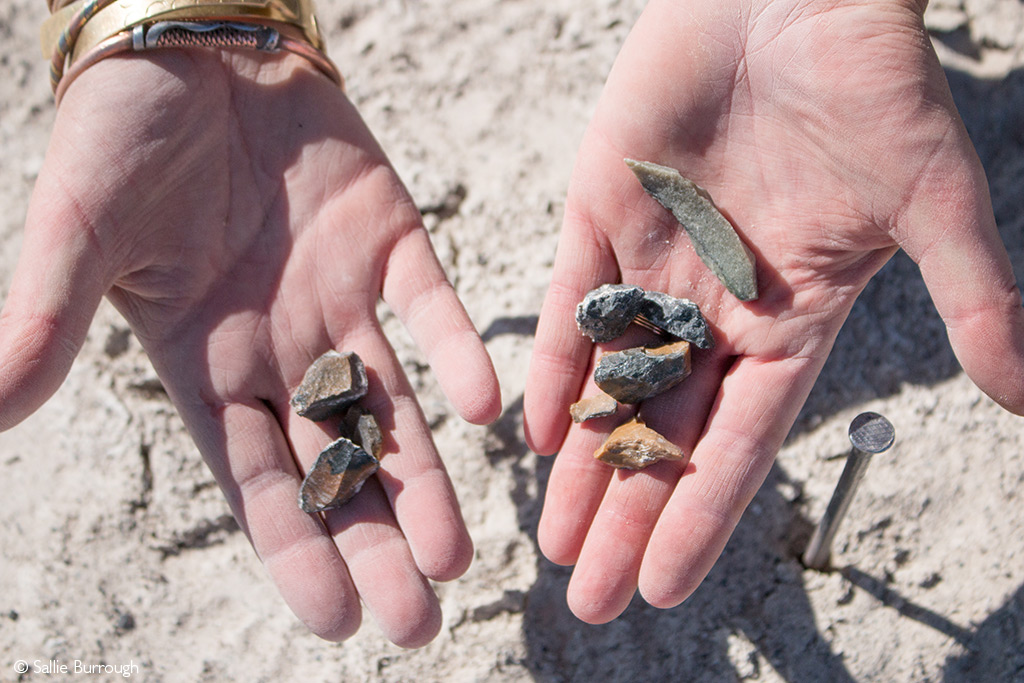
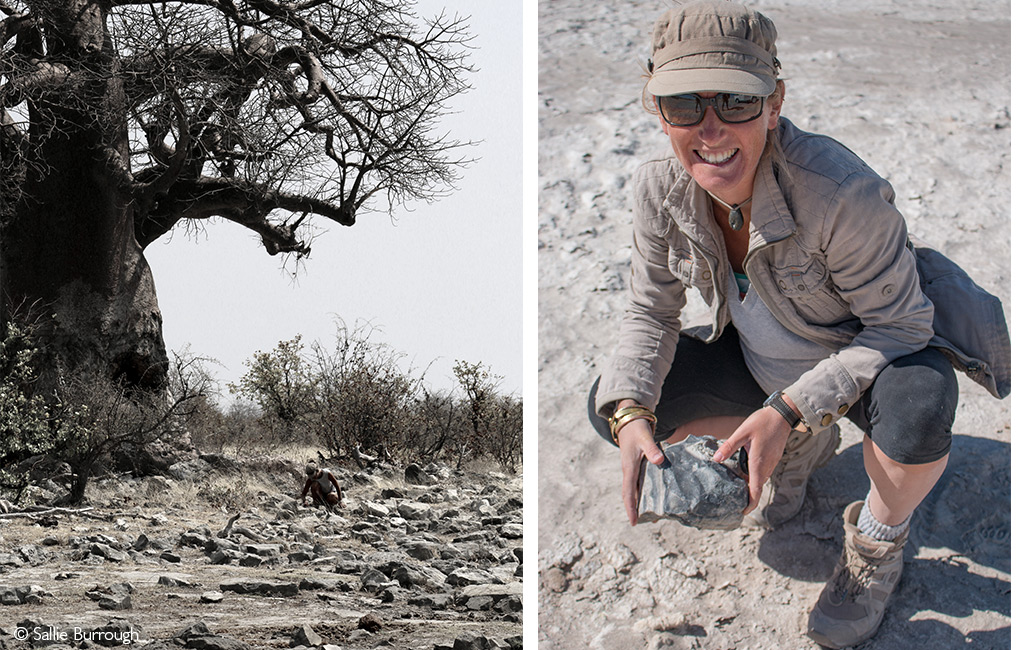
Logging over 80 new Stone Age archaeological sites and artefact scatters on the lakebed, the researchers excavated six of these in detail, stripping back the surface salt rind to carefully map every fragment of stone artefact deposited at the sites. The archaeologists then used an approach known as Chaine Operatoire – reconstructing the operational sequence of the stone tool makers to see what choices those humans were making in the past. How was the tool made? How was it used? Resharpened? Recycled? Why was it discarded?
All the excavated sites had a common theme – they withheld the fleeting remnants of a band of Middle Stone Age humans who sat for a few moments or hours on a dry lake bed, taking time out to fashion tools out of silcrete. Geochemical fingerprinting of both the artefacts and natural outcrops of silcrete in the basin enabled geologists to determine where the material for making the tools had come from. The chemical signatures suggest this was a landscape well-known to Middle Stone Age people, and evidence shows these people would move large lumps of suitable rock between 7 and 55km if they thought it was high enough quality. Nearly all the archaeological finds were made from black silcrete formed from the lake mud, its fine-grained texture perfect for fashioning tools.
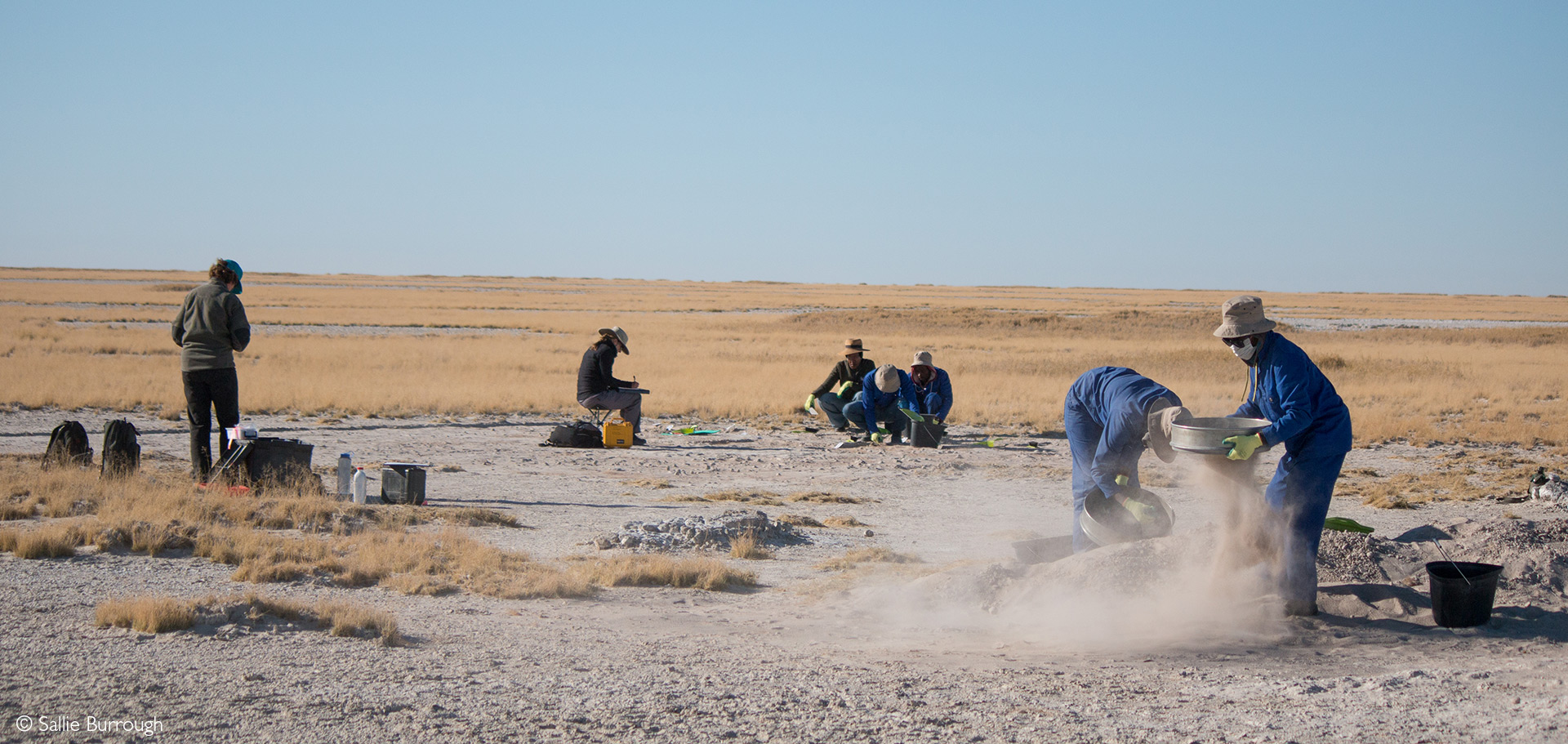
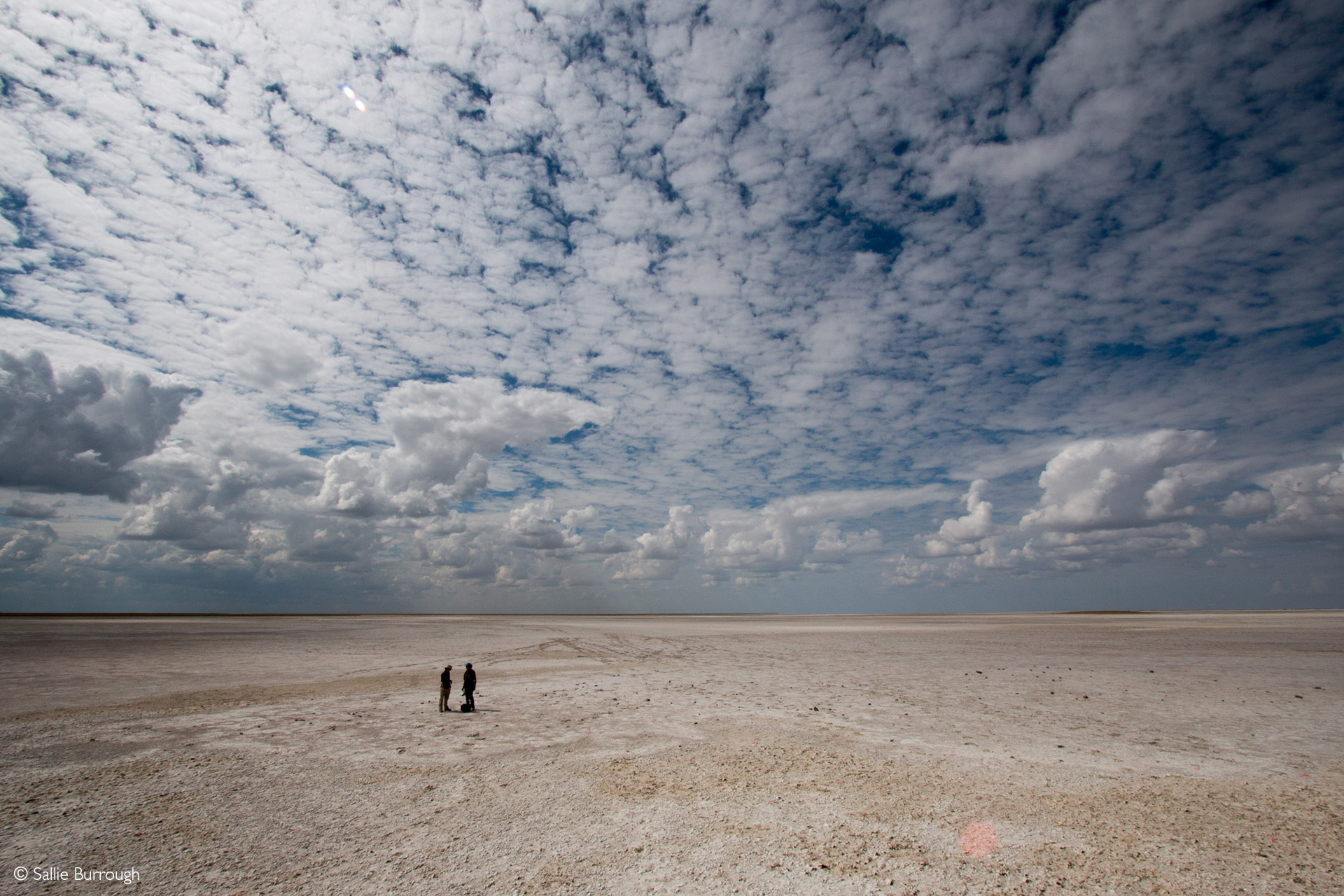
The abundance of silcrete in the basin lent itself to perfectionism, with tool-makers happy to discard tools impaired by the slightest mistake. Bungled artefacts were often found a little way from where the rest of the knapped fragments were refitted, and the archaeologists like to joke that they might have been thrown in anger or frustration at the mistake – a 70,000-year-old tantrum recorded in mud and stone. No perfect tools were found at any of the sites – those had presumably been taken away for hunting elsewhere. Neither was there evidence of any of the imperfect remnants used in hunting. These were most likely retooling sites for groups of people rich in time and stone. Sometimes, the knappers produced knives and scrapers, but mostly, they made points that were symmetrical and not too thick, the kind that might be hafted as a spear for hunting. It is hard not to speculate that all those years ago, we too may have once been much like the lions that annually follow the herds of migrating Zebra into the basin today: walking a journey that offered rich rewards.
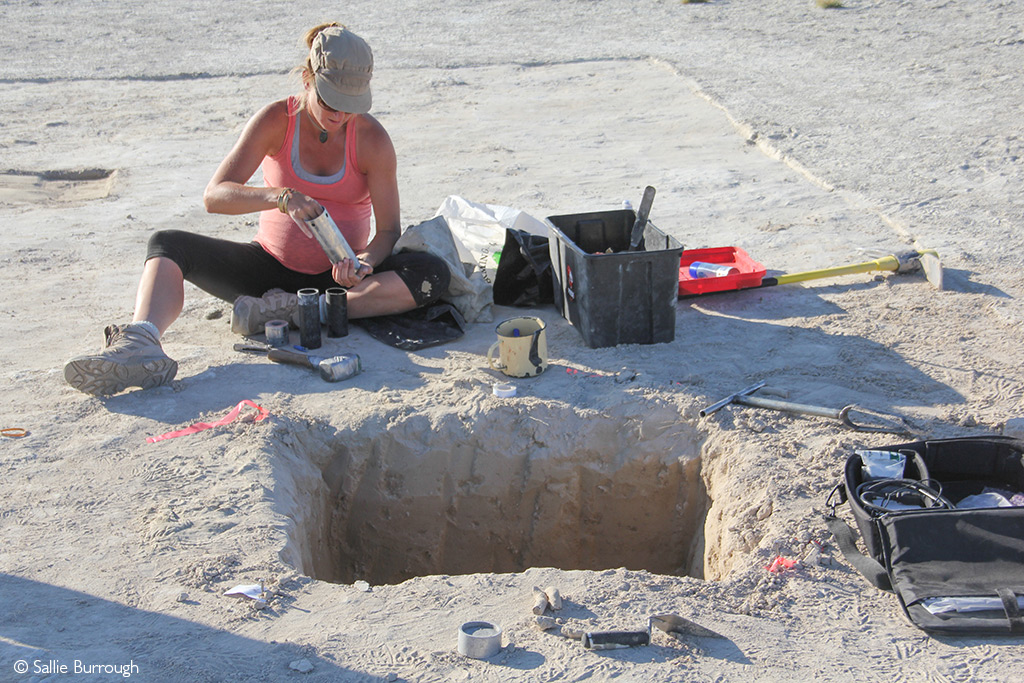

Perhaps the biggest surprise in this geochemically active basin full of migrating ungulates was how well-preserved these sites were. In some cases, locating where a single human sat and fashioned a tool 75,000 years ago was possible. As well as piecing together the archaeology, our team used Optically Stimulated Luminescence (OSL) dating to reconstruct how and when the landforms and sediments around the sites were deposited. From this, we concluded that several of these sites were rapidly buried by lake sediments not long after they were occupied. They remained buried for thousands of years until sometime in the last few centuries when the lakebed experienced some of the driest conditions of its long and dramatic history. Eroding as vast plumes of dust, removing these ancient lake sediments reveals older surfaces from past dry times. This unique landscape history has allowed the lake to preserve phenomenal snippets of our human story – windows that transcended extraordinary periods to open onto a few tangible moments of our collective past.

Time seems compressed in the Makgadikgadi, and it feels like one can almost touch the ghosts of humanity’s ancestors. Sometimes, I watch visitors sit on that lakebed; I see them take in the enormity of that connection. I see them reach out and touch a rock last held by a man or woman who walked here 70,000 years ago. I see them trying to picture a 66,000km² lake, already disturbed by the vastness of billions of stars above their heads, already in awe of the giant Baobabs that have witnessed so many of us come and go over thousands of years. I see their sense of place in the big picture being profoundly destabilised, and I see them clock the extraordinary collective journey of humanity. In a world that is now so obsessively focused on the self, this place provides a very different perspective, one that can be healing, humbling, and disturbing. That is the magic of the Makgadikgadi.
To comment on this story: Login (or sign up) to our app here - it's a troll-free safe place 🙂.![]()






